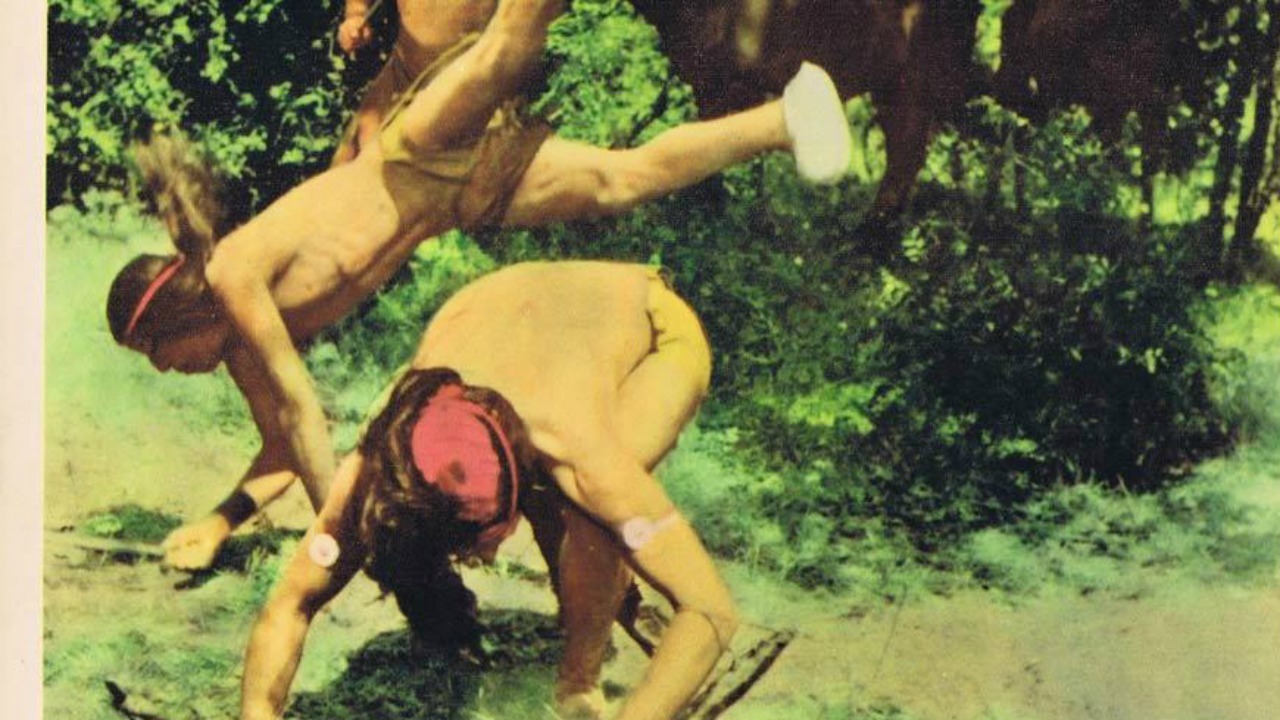

Others have suggested that Indian Paint was a little un-PC in its depictions of Native Americans but I reckon you need to take the historical context into account when you consider a film such as this. It was made in the early 60's and I think that the idea to focus on the lives of the Native American people was a pretty commendable one; in fact, not only that, but there was a total absence of white people at all in this story. Granted, some white actors played the Indian characters with make-up but this is surely a minor complaint when set alongside the film's worthwhile overall objectives.It's essentially a coming-of-age story about a boy and the horse he loves. But in amongst this there are quite a few other dramas and story developments, such as the ongoing conflict between warring tribes. It's not necessarily a great film but it is an agreeably unusual one, with an unexpected emphasis on a people not usually given the main focus in cinematic offerings. It must have played its own small part in painting a more human picture of Native Americans than was usually the case in traditional westerns and for this reason it is a pretty nice little movie.
... View MoreIf Indian Paint hadn't started out with a bad historical error I might have given it a star or two higher rating. But even a B independent picture should not have made such a bad mistake. Right at the beginning the narrator says that the story is set in the time before the white man came to the western hemisphere and the Indians who are plains Indians are all riding horses.Even high school history students know that the horse came to America first from Cortes who let his stock run free and multiply in Mexico. Horses gradually moved north or were traded north by tribes to the south to their northern brethren who envied what could be done on horseback.Such an incredibly silly error mars a very nice story of a young Indian boy coming of age as a warrior through his love and care for a wild colt that everyone else says can't be broken. Jay Silverheels is the chief of the Arikawaha tribe and he's got considerably more dialog than what he used to have in The Lone Ranger. Silverheels's son is Johnny Crawford two years from The Rifleman and trying to keep his career alive as a teenage heartthrob. He plays the lad trying to tame the wild colt and has quite a few adventures in the process.Some criticism is voiced about not having American Indian players in the roles that whites have in this film. Take a look at the credits and you'll see one Robert Crawford, Sr. is the associate producer of Indian Paint. That should answer the question why his Johnny was cast in the lead. Please note that Robert Crawford, Jr. who was a regular in the Laramie series while Johnny was on The Rifleman is cast as Johnny's best friend. I think this is the last time the Crawford brothers worked together on a project.Indian Paint was shot on a shoestring completely outdoors in Texas where the action would have taken place a few hundred years earlier. It does lack some production values that a big studio could have given, but it's still a nice story, good family viewing.But let no one come away with the fact that horses were being ridden before Columbus got here.
... View MoreI waited 42 years to see this movie. My mother wouldn't let me when it came out, and it has been virtually impossible to find it on video until I checked Netflix. I was very fulfilled to be able to watch my childhood hero Johnny Crawford in this movie finally. I'm sure Native Americans would not agree with much of the content in here by today's standards, but by the standards of 1964, it was fairly agreeable. The Indians were fighting one another, and there is no conflict with "the White Man." It's an improbable story of a boy and his horse but I sure enjoyed it. If you watch carefully, the horse, as both a colt and an adult, are played by several different horses.
... View MoreI am surprised no one has commented in this film. Sure, it is cheesy by todays standards, and perhaps even for its time. The dialog is pretty corny, and the representation of Native American's might even be considered condescending in its naiveté, especially by our current PC standards. But what I found interesting is that it tells the story of young Indians coming of age from their own perspective. Once again this perspective isn't really theirs, its Hollywoods, but none-the-less it is a story about their life, much in the same way as "Dances With Wolves" tells the story of Indian life. Not that I am comparing the films. "Dances.." is obviously a classic and very few have even heard of "Indian Paint". Rather I am associating the themes of the films and their focus on the lives of the Indians themselves.Not an easy one to find, but if you do, give it a shot. Set your schmaltz meter to the appropriate era and it should be entertaining enough. Plus it's got Johnny Crawford. How bad could it really be?
... View More